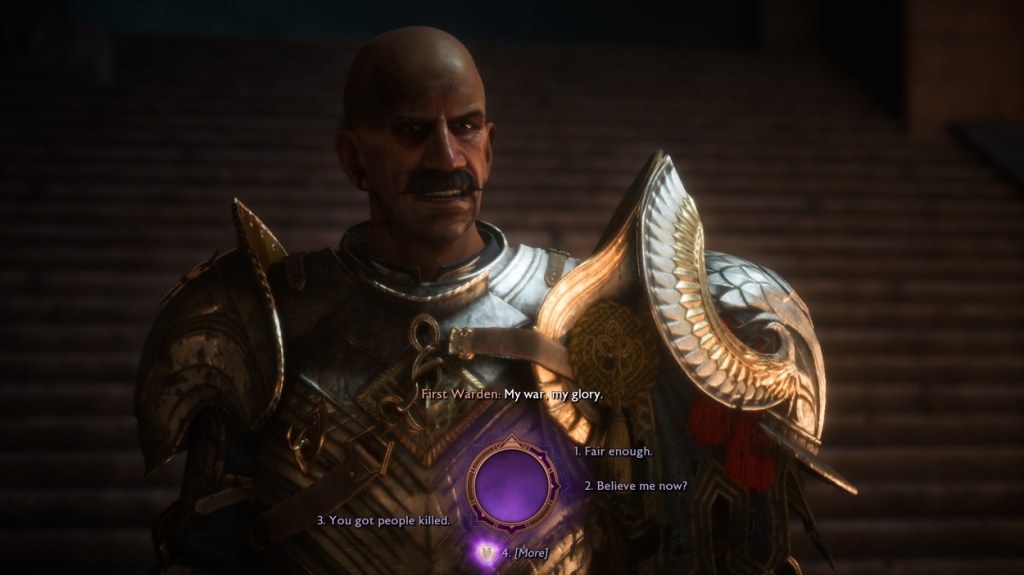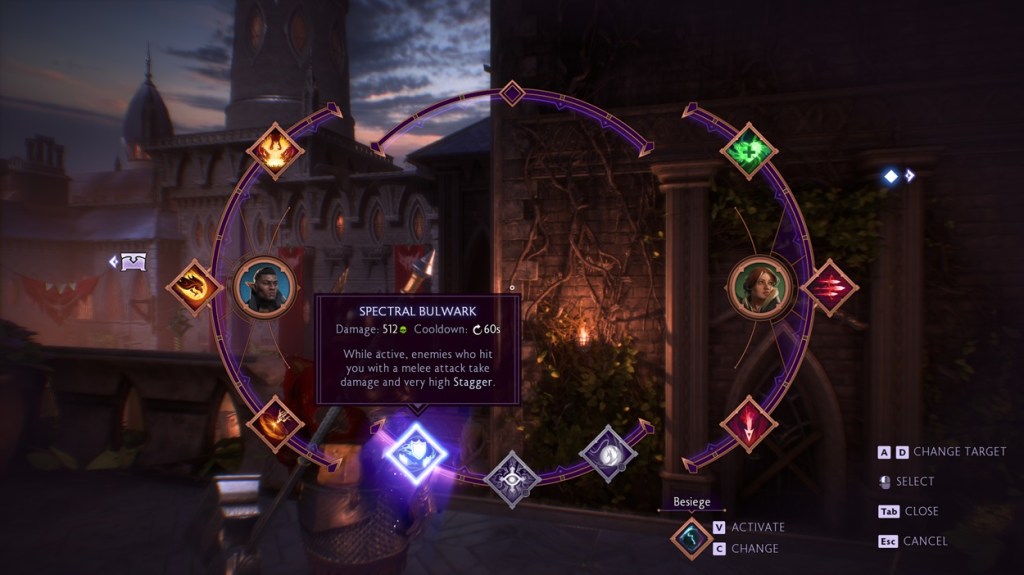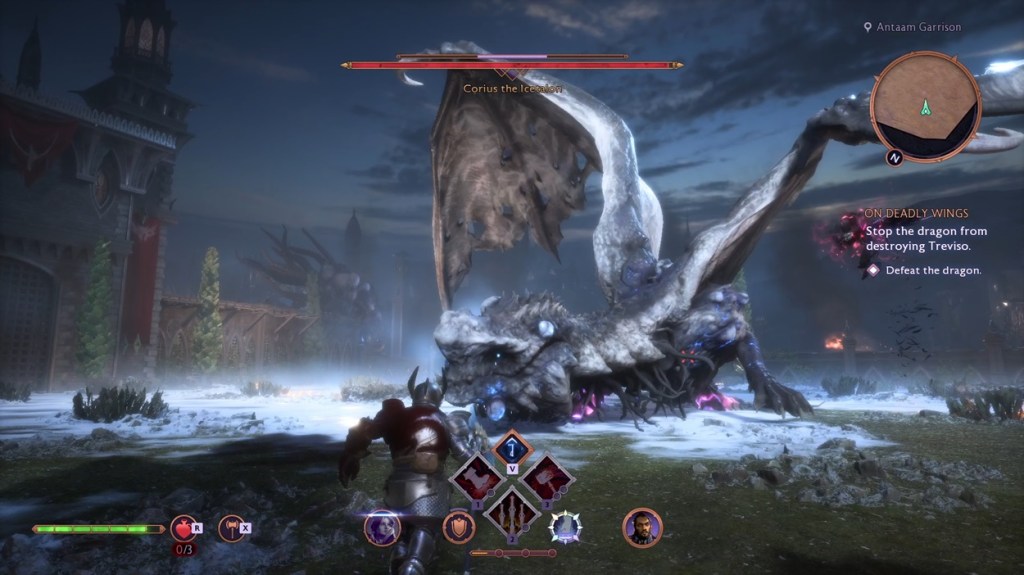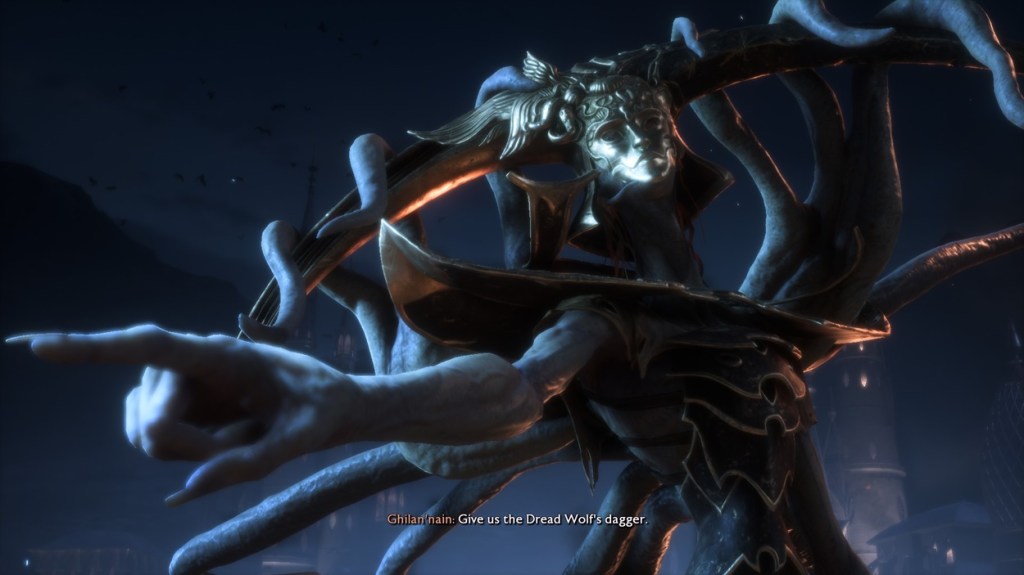Dragon Age: The Veilguard is the highly anticipated sequel in the well-loved Dragon Age series, which sacrifices the core audience of the franchise to trying something visibly different. Alas it is only to fail to entice both the core and newly targeted player base. The game is massive in scale, having both a great combat system and exploration, while also having a terribly written story and poor dialogues. Being a player who loved the old Dragon Age Origins but skipped Inquisition, I was very excited to try the game out.
Thanks to a copy provided by Nvidia, I quickly dropped in as a Dwarf Warrior who was also a Grey Warden, a similar character I had back in Origins. Dragon Age The Veilguard has many ups and downs, the downs mainly in the core strengths expected from the franchise. So join me on this journey and I detail it all in my Dragon Age: The Veilguard review.
So Many Choices, but Do They Matter?
With the huge success of RPG games recently, especially with the release of Baldur’s Gate 3, the ceiling for a role-playing experience with multiple storylines had truly reached at an all time high. BioWare has been well known for making games with multiple story defining choices that keeps the player thinking on each decision. The Veilguard doesn’t shy away in this regard, giving the players an array of important choices throughout game. But how much did those choices matter?
A sad reality is that other than the game’s ending and the decision between Minrathous and Treviso made near the end of Act 1, none of the other choices truly effect the outcome of the main story. Depending on your choice, the game will have a set of different dialogues or maybe a slightly different approach to a story angle, but in most cases, the outcome remains the same.

For example, you are asked to either punch the First Warden or reason with him at an important point in the game. Both the options leads to the same outcome of the First Warden getting torn apart by the gods, later appearing as a Blight captive to be mercy-killed by Davrin. The decision you make only changes a set of dialogues and interactions, but that’s it!
The choice between Treviso and Minrathous is the only consequential decision in the early-game, destroying city that you didn’t chose. Even the important choices in the ending is mainly based on the faction and companion quest you have finished previously, instead of the dialogue choices made throughout the game. This was quite a bummer for me as I was often locked out of making any important decisions in the game.
Side with a crime syndicate to take down a greater evil? Well you don’t have a choice as the game forces you into it. I don’t like these characters and don’t want them to be in my party, too bad because the choices have already been made. I don’t care about humanity, the evil gods have the much cooler team, how do I join? You cannot as there is no evil playthrough!
The Veilguard was said to have “diverse role-playing” but provided a very limited set of actual roleplaying options.
Fun and Exhilarating Combat with No True Challenges

The new action combat system in Dragon Age The Veilguard is definitely one of the highlights of the game, allowing players a wide range of play style in their respective chosen class role. As a warrior, I loved bashing my way through hordes of enemies with my two-handed hammer. The Skill tree was diverse enough to feature multiple different play styles and skills to min-max, which is always enjoyable.
The double equipped weapon sets mechanic was also implemented beautifully in the game, allowing me as a warrior to seamlessly change between a Sword and Shield to a massive Two-handed hammer without much of a penalty. Many of the skills in the also combined to create additional effects, like Detonation, and it felt extremely satisfying to do it in the game.

Sadly, even though the game had a great combat system, it failed to deliver a real challenge. None of the bosses in the game had a memorable boss fight, most sharing a similar set of moves to their archetypes. The champions, which dropped the champion essences, where a bit difficult with some different attack patterns, however, the design of the enemies and the fights did not leave a lasting impression.
The biggest disappointment for me was the first Archdemon fight during ‘The Siege of Weisshaupt’, where I was expecting to fight a massive dragon, only to have a gimmick battle against a “three-headed snake” while hordes of enemies were thrown at me to increase the difficulty.
I can almost guarantee that most players who have finished the game would not be able to recount most of the names of the bosses they fought in the game, because none of them where interesting enough to be remembered.
Most boss fight scenarios where mainly about fighting hordes of enemies, instead of a big well-created boss.
A Weak Storyline with Stale Dialogues
Dragon Age The Veilguard continues the series’ story, revealing a ton of new information about the lore of the franchise, especially about the birth of Elves, blight, the Evanuris, Titans and Dwarves. The story revolves around Solas, the Dreadwolf, who Inquisition players would be all too familiar with. Solas was a companion in Inquisition. However, he turns out to be one of old Elven gods who imprisoned the Evanuris — Elgar’nan and Ghilan’nain in the fade.
The story starts of with Solas trying to reopen the Fade and destroy Elgar’nan and Ghilan’nain completely, which he failed to previously do, and it is left to Rook, Varric and other compatriots to stop him as it would unleash fade demons through the world.

Rook, the playable character, succeeds in stopping Solas by breaking his ritual, which frees Elgar’nan and Ghilan’nain while locking Solas away in the fade. The main chunk of the story is fighting these two elven gods while strategizing with Solas in the fade. All these sounds good, but that’s not where the issue lies with storytelling in Dragon Age The Veilguard. It lies somewhere much more fundamental.
Boring Jokes and Failed Character Interactions
Dragon Age Origins, and Inquisition from what I have seen, features a great cast of characters that constantly make funny jibes at each other, making every party dynamic a new experience in the journey. I loved listening to funny interactions between the characters in Origins, how Oghren continuously flirt, Morrigan passes snide comments, Alistair jokes, Shale acts fascinated with humanity, or Wynne preaches the Chantry’s ideologies.

Each interaction between the characters was always fun to watch and listen, often making me smile while I focused on the grim task of taking down the Darkspawn.
However, such interactions are entirely missing in the Veilguard. Well to be exact, the interactions that the game does have are sub-par, with ‘few to none’ funny jokes. Barely any of the characters are ever shown to have a vulnerable side, with everyone acting a goody-two-shoes towards each other. That might sound okay, but that’s not how an actual groups of friends will ever act, especially under the duress these characters should be facing.
If you are not making fun of each other, arguing at the smallest of details, or having clashes of personalities, then it basically means that the people don’t know each other enough yet, nor do they care.
That’s exactly how the companions in Veilguard come across, appearing stale, boring and showing one-dimensional emotions. Even after playing through all the companion quests, I am still unable to have any genuine attachments to any of them. Even without the funny interactions I expected, the basic dialogues were also extremely stale. The dialogues appeared to be ‘fluff content,’ providing no context while saying a ton of things at the same time.
Digging up the Same Repeated Dialogues or past Experiences

A major problem of The Veilguard’s storytelling, especially in the early-game, is the characters constantly repeating the same thing. I very quickly grew tired of the Veil Jumpers and Bellara constantly talking about “Artifacts” and “Relics”, in every single dialogue. Hearing the same terms, which essentially doesn’t mean anything, or hearing the same background story god-knows how many times, made it extremely annoying.
The characters constantly refer to “Artifacts this, Relic that” but what Artifact and what Relic? Or when Rook recounts for the ‘upteenth’ time about him not following the First Warden’s orders and saving a village against the Darkspawns, after choosing the Grey Warden background.
When it came to the Veil Jumpers, there was no specificity on what Artifact is responsible for which effect. Everything was brushed under the same terms and thrown every now and then to make the characters look intelligent and important.
However, what it essentially did for me was break immersion to the point where I failed to connect with any of the companions. The only character with some relatable dialogues was Harding, and even she appeared to be acting overly strong in situations where it would be completely okay to show a softer or vulnerable side.
Exploration Is a Delight in the Veilguard
Dragon Age: The Veilguard is an exploration delight, filled with hidden locations, loot, puzzles and secrets. Each area in Veilguard is actually much larger than they first appear to be, from the Crossroads to the large cities. I loved exploring every nook and crany I could while doing my quests.
One of the things I loved specifically was stepping into Solas’s memories from time-to-time in the Crossroads. The Crossroads has multiple secrets, including areas with Solas’s memories, which gives a look at his regrets and help player understand the character’s motivation better. Another thing I loved were the hundreds of puzzles, which often were rudimentary but some had me quite worked up, found throughout Tevinter.
Much of the game’s content is also hidden behind side objectives, like finding Champion Essences to open areas, which are completely unrelated to the main storyline. Each location was also diverse in look and often left me in awe, like the old elven ruins in the Arlathan Forest, or the Lyrium hall of Kal-Sharok.
The game also features hidden loots, including unique weapons and armors. One of the things about The Veilguard I liked is that the weapons and armors upgrade in rarity once you find the same piece multiple times. This gives another incentive to explore each area to find weapon upgrades from chests.
Graphics and Performance
Considering the rest of the game, I was expecting Dragon Age The Veilguard’s performance to be as poor as its story, I was left pleasantly surprised. Truth be told, the game did run into some performance issues during the setup. But before anything else, here’s my test bench.
Test Setup:
CPU: Intel i3 8th Gen
GPU: NVIDIA RTX 4060
RAM: 16×2 DDR4 RAM@2400MHz
SSD: WD SN570 500GB
Monitor: 1080p@144Hz
We tested the game using the highest settings and playable settings in 1080p and 1440p. The tests also includes results with DLSS, which has very aggressive settings in Veilguard. Other than minor hiccups in larger cities, the game mostly ran smoothly. So, here is a complete performance review of Dragon Age The Veilguard.
Dragon Age The Veilguard PC: 1080p Highest Settings
At the highest settings in 1080p, with RTX set to selective, the game gave an average FPS of around 26. However, in the large cities, the FPS tanked to 10-15 FPS, with the GPU utilization reaching 100% and CPU utilization hovering around 80%. Otherwise, GPU stayed between 70-75% usage, while CPU utilizations stayed around 60%.
| FPS | DLSS OFF | DLSS ON |
|---|---|---|
| Average | 26 | 53 |
| Maximum | 42 | 72 |
| Minimum | 10 | 25 |
With DLS and Frame Generation turned ON, the average FPS jumped to 53, with the GPU utilization dropping to 47%, and the CPU utilization jumping to 87%. Thankfully, that was more than enough to enjoy the game.
Dragon Age The Veilguard PC: 1440p Highest Settings
When it comes to the highest settings in 1440p, the average FPS dropped a bit from 1080p, hitting 18 FPS. This dropped to 8-12 in big cities, making it unbearable to go through those areas. The GPU again touched 100% utilization, while staying 80-90% as average. The CPU utilization mostly remained unchanged from the 1080p, staying around 60-70%.
| FPS | DLSS OFF | DLSS ON |
|---|---|---|
| Average | 18 | 48 |
| Maximum | 35 | 65 |
| Minimum | 6 | 22 |
With DLSS and Frame Generation turned ON, the average FPS jumped to 48, with the large cities giving around 22-28 FPS. As expected, the GPU utilization also dropped to around 50%, with the CPU utilization jumping to almost 92% in certain sections.
Dragon Age The Veilguard PC: Playable Settings
When it comes to the playable settings in Veilguard, which was set in High with some slight custom changes, the difference in performance was quite noticeable. The average FPS was around 49, with the large cities giving around 25-30 FPS. The GPU utilization dropped to 50%, while the CPU utilization remained nearly the same around 55-62%.
| FPS | DLSS OFF | DLSS ON |
|---|---|---|
| Average | 49 | 68 |
| Maximum | 65 | 89 |
| Minimum | 25 | 42 |
With DLSS and Frame Generation turned ON, the average FPS jumped to 68, even reaching a stable above 80 in certain areas. The cities were also much better, giving around 42-50 FPS. As seen previously, the GPU utilization dropped to 33%, while the CPU utilization jumped up to 75-80%.
Overall, while I wasn’t fully satisfied with the game’s performance, Dragon Age: The Veilguard ran throughly enough for me to enjoy my ride.
Verdict: A Wasted Opportunity
Dragon Age The Veilguard feels in every sense a wasted opportunity to go down as one of the biggest RPG games ever. The game has a great combat system, paired with good exploration, but fails miserably where it matters the most — storytelling and character interactions. The game did a one-eighty on many of its fundamentals and lore, alienating it’s core fanbase while failing to tap into the new audience.
Dragon Age has always been the game to play for the story, but for the first time I would recommend a Dragon Age game only for the combat and exploration. Old fans might still find some respite in the lore drops they had been waiting to learn about in the series, but that’s about it when it comes to the game’s storytelling highlights.




